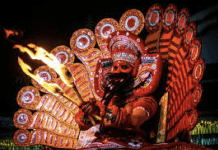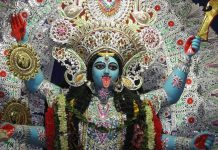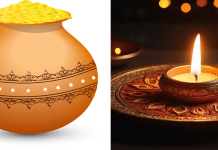
Nag Panchami, a revered Hindu festival celebrated across India, Nepal, and other regions with Hindu, Jain, and Buddhist communities, holds profound cultural and spiritual significance. This festival, observed on the fifth day of the bright half of the lunar month of Shravana (July/August), is a unique amalgamation of mythology, rituals, and cultural heritage.
The Day of Serpent Worship:
Nag Panchami, often referred to as Naga Panchami, is a day dedicated to the worship of Nagas or snakes. The term “Naga” signifies both actual snakes and mythical serpent beings. Hindus, Jains, and Buddhists come together to offer their reverence to these creatures, seeking blessings for their families’ welfare.
Etymology and Symbolism:
The term “Panchami” signifies the fifth day of the waxing or waning moon, specifically falling on the fifth day of the moon’s waning in the Lunar Hindu month of Shravana. This conjunction of timing and symbolism designates the day as “Naga Panchami,” where “Naga” denotes a cobra or a serpent.
Mythological Significance of Nag Panchami:
Honoring Lord Shiva and Hindu Mythology:
Nag Panchami, a significant festival in Hindu culture, bears deep cultural significance. During this event, people pay homage to snakes, particularly cobras, as a mark of respect towards Lord Shiva. Hindu mythology often portrays Lord Shiva wearing a cobra around his neck, symbolizing his control over fear and mortality. By venerating snakes, devotees indirectly express their reverence for Lord Shiva and the cosmic forces he represents.
Commemorating Krishna’s Triumph:
Nag Panchami also commemorates the legendary triumph of Lord Krishna over the mighty serpent, Kalia. The story narrates how a young Lord Krishna fearlessly faced Kalia, who had tainted the Yamuna River and spread fear among people. Through his divine grace, Krishna subdued Kalia, showcasing the victory of good over evil. This tale not only highlights the heroic nature of Krishna but also reinforces the theme of triumph of positivity in the face of adversity.
Legends from the Mahabharata
One of the notable legends hails from the Mahabharata epic, where the sage Astika intervenes to prevent King Janamejaya from decimating the serpent race through a sacrificial ritual. This intervention is believed to have taken place on the Shukla Paksha Panchami day of the Shravana month, marking the inception of Nag Panchami.
Cultural Significance, Rituals, and Celebrations:
Nag Panchami holds deep cultural importance as devotees immerse themselves in a medley of rituals and celebrations. The festival’s essence lies in venerating snakes, particularly cobras, as an homage to Lord Shiva. In a ceremonial display of reverence, a serpent deity, fashioned from materials such as silver, stone, wood, or painted images, is bathed. This ritualistic bath, often performed with milk, symbolizes purity and nourishment. Through this act, families seek blessings that foster harmony and protection within their households.
Temples and Sacred Spaces:
Central to Nag Panchami is the spiritual pilgrimage to revered temples and designated snake sites. Here, devotees gather to offer prayers and express their respects to serpent deities. The pantheon includes Ananta, Vasuki, Taxak, Karkotaka, and Pingala, each occupying a distinctive place in Hindu mythology. These hallowed grounds become pivotal hubs for forging spiritual connections and embracing cultural unity during the festivities.
Observing the Sacred Shravan Month:
The tapestry of Nag Panchami unfolds within the sacred embrace of the Shravan month, a time of profound spiritual significance in the Hindu calendar. Throughout this period, devotees embark on a journey of devotion, observing fasts, and engaging in acts of piety. Rituals and prayers are undertaken with the intent of seeking blessings not only for oneself but also for cherished family members. The act of fasting and the offering of milk carry layered symbolism, embodying protection and the benevolence of divine forces.
The Veneration of Live Snakes:
An intriguing layer of Nag Panchami centers around the veneration of live snakes, with a special emphasis on cobras. Guided by skilled snake charmers, these revered creatures are presented with offerings of milk, acknowledging their role as emissaries of divine energy. This unique practice bridges the festival’s connection between the natural world and the ethereal realms, symbolizing the harmony between both spheres.
Diverse Cultural Practices:
Nag Panchami’s resonance extends beyond geographical confines, accommodating a diverse tapestry of cultural practices. States such as Karnataka, Rajasthan, and Gujarat celebrate the festival during the dark half (Krishna Paksha) of the same month. The celebration further finds resonance in traditional Indian wrestling gyms known as “Akhara,” which engage in distinctive observances. Here, the snake’s mystique is celebrated as a symbol of virility and kundalini energy, adding yet another layer to the festival’s cultural mosaic.


























































